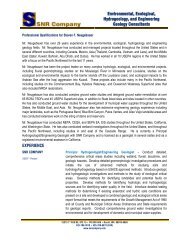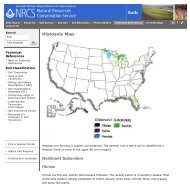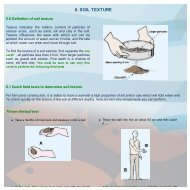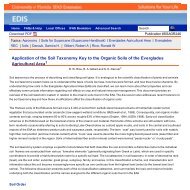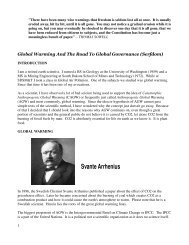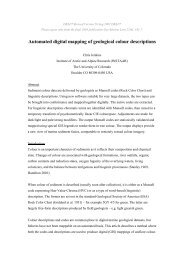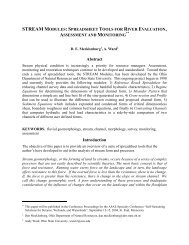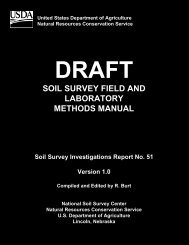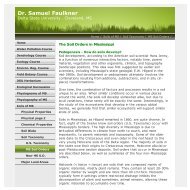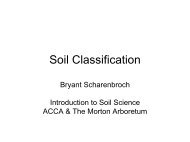chapter 3 fundamentals of fluvial geomorphology and stream ...
chapter 3 fundamentals of fluvial geomorphology and stream ...
chapter 3 fundamentals of fluvial geomorphology and stream ...
You also want an ePaper? Increase the reach of your titles
YUMPU automatically turns print PDFs into web optimized ePapers that Google loves.
morphologist to infer process from classified channel form. Thefirst step in classification is to identify whether the channel is eitheralluvial or non-alluvial. An alluvial channel flows in bed <strong>and</strong> banksthat are composed <strong>of</strong> material transported by the river underpresent flow conditions. The channel is, therefore, free to adjustdimensions <strong>and</strong> location in response to changes in flow <strong>and</strong>sediment load. Conversely, a non-alluvial river is neither selfformednor free to adjust. Examples <strong>of</strong> non-alluvial rivers includebedrock-controlled channel <strong>and</strong> <strong>stream</strong>s flowing over very coarseglacial deposits.Many classification schemes rest on channel planformpattern, <strong>and</strong> stem from Leopold <strong>and</strong> Wolman’s (1957) classification<strong>of</strong> channel planforms as straight, me<strong>and</strong>ering, or braided. In thisrespect, the diagram produced by Brice (1975) is notable becauseit builds on earlier schemes to cover a wide range <strong>of</strong> commonlyobserved planforms, <strong>and</strong> has proved useful in engineeringgeomorphic studies (Figure 3.13). Schumm (1981, 1985)recognized an even broader range <strong>of</strong> channel patterns, althoughthe basic straight, me<strong>and</strong>ering, <strong>and</strong> braided patterns are stillrecognized within his classification <strong>of</strong> 14 basic patterns (Figure3.14).Fundamentals <strong>of</strong> Fluvial Geomorphology <strong>and</strong> Stream Processes 55



